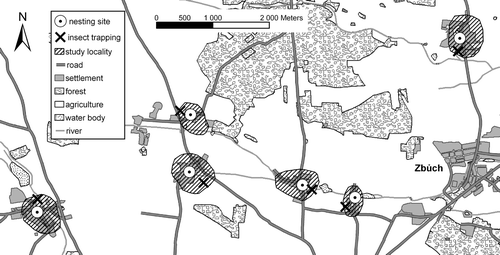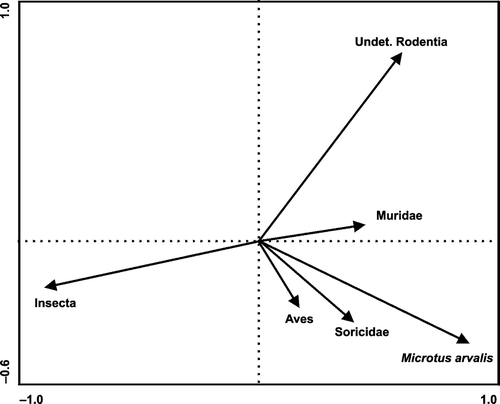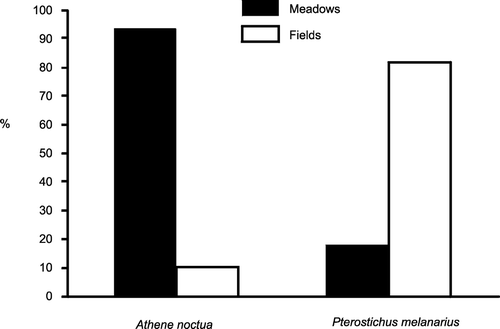Figures & data
Figure 1 Distribution of study localities, Little Owl nest‐sites, and insect‐trapping sites in the study area, western Bohemia, Czech Republic.

Table 1. Weight, frequency and biomass of each component in the diet of Little Owls, based on pellet analysis.
Figure 2 Projection scores of the main components of the diet of Little Owls in western Bohemia expressed as numbers (principle component analysis, I and II axis explained 72.4 % of total variation). Horizontal axis, I; vertical axis, II.

Table 2. Comparison of the composition of trapped insects and Little Owl insect diet composition (χ2test).
Table 3. Factors affecting the availability of insect prey on Little Owl hunting areas and the proportion of insect prey in the diet (Generalized linear mixed model with Poisson and Gamma distribution, respectively). BIC, Bayesian information criterion.
Figure 3 Hunting habitat preferences of Little Owls in meadows and fields based on telemetry (n = 307 locations), and the proportional abundance of Pterostichus melanarius (n = 212 individuals) from traps in meadows and fields within Little Owl territories (2 × 2 tables, χ2 = 47.5, df = 1, P < 0.0001).
